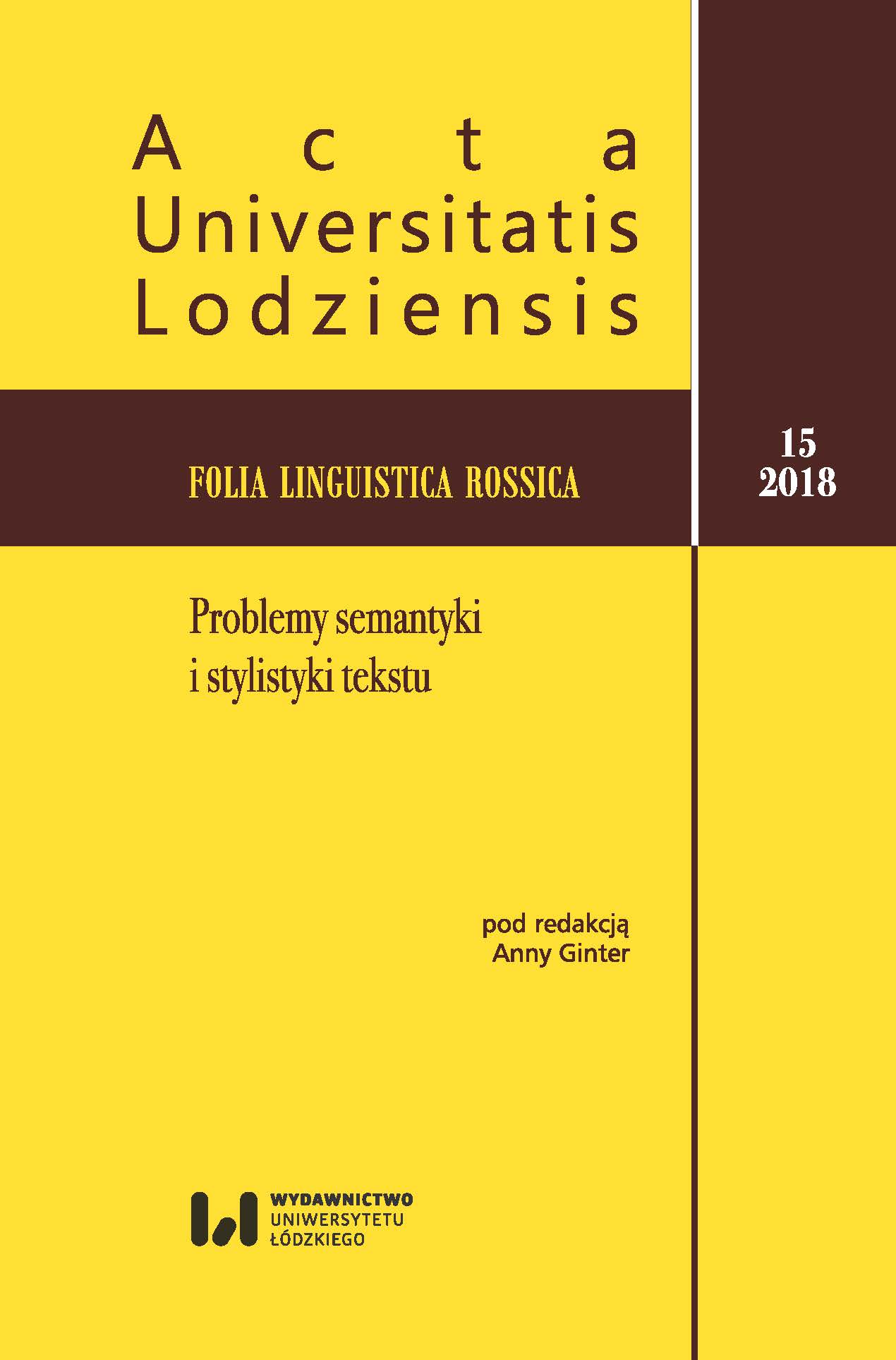Barwy obecności i nieobecności w Lolicie
The colors of presence and absence in Lolita
Author(s): Monika ZasowskaSubject(s): Language and Literature Studies, Studies of Literature, Russian Literature, Translation Studies
Published by: Wydawnictwo Uniwersytetu Łódzkiego
Keywords: synesthesia; synesthetic metaphors; English-Polish translation; synestezja; metafora synestetyczna; tłumaczenie angielsko-polskie
Summary/Abstract: The multiplicity of the phenomenon of synesthesia has been a subject of intense scientific research performed mainly within a relatively narrow field of neurobiology or psychiatry (see e.g. Cytowic 2002; Cytowic and Eagleman 2009; Grossenbacher and Lovelace 2001; Sagiv 2009; J. E.Harrison and S.Baron-Cohen 1997), for which it is mostly a medical condition of the brain. However, synesthesia has also become a target of many linguistic endeavors as its realizations through language give rise to what is called a ‘synesthetic metaphor’ – a spontaneous linguistic production and/or a well-thought stylistic device. The world-famous Nabokov’s masterpiece Lolita is by far one of his most synesthesia-laden prose writings and it alone provided a fertile ground of research in both English and Russian, and many other languages to which the novel has been translated (see e.g. Ginter 2008; Zasowska 2012; Ginter 2016). The following paper aims at investigating the realizations of the English synesthetic metaphors in Lolita in the two Polish translations available in the literature: that of Stiller (1991) and that of Kłobukowski (1997). Of crucial importance is the function of color, a searchlight of some kind, beaming only on those who count. It doubtless centralizes Lolita in the novel and therefore may be called the ‘segregating’ factor: it is there whenever the girl is present and vanishes when she is no longer in sight. As has also been noticed by Zasowska (2013), the distribution of synethesia is closely linked with the sex of a character, and again it is Lolita that gathers almost all of the synesthetic metaphors for herself. Not even a vaguely similar tendency has been observed in the case of the other characters, both male and female, which are ‘synesthetically’ neglected by the author, that being an apparently conscious decision on the part of the writer. The present analysis consists of two main parts. First, all of the color-related synesthetic metaphors have been found, counted and categorized. The same was done with metaphors relating to the senses of sight, touch and taste.Second, their two Polish translations were compared and contrasted in terms of the synesthetic metaphor construction. The findings have shown that in most cases synesthetic metaphor was maintained by the translators throughout the novel and successfully rendered into the Polish language. However, different stylistic devices and lexical markers were used in doing so. // Zjawisko synestezji opisywane w literaturze medycznej, głównie w wąskiej dziedzinie neurologii lub psychiatrii (zob. np. Cytowic 2002, Cytowic i Eagleman 2009; Grossenbacher i Lovelace 2001; Sagiv 2009; J. E. Harrison i S. Baron-Cohen 1997) dotyczy zmian w obrębie kory mózgowej, które są odpowiedzialne za tzw. ‘postrzeganie’ zmysłami. Synestezja to również przedmiot badań językoznawczych, które skupiają się na metaforze synestetycznej, a więc celowym (bądź nie) zabiegu stylistycznym. Lolitę bez wątpienia można zaliczyć do największych dzieł literackich XX wieku, a samemu autorowi – Vladimirowi Nabokovi – nie sposób odmówić geniuszu tkwiącego w niezwykłej zręczności językowej, która przyniosła mu zarówno sławę i uznanie, jak i niesłabnącą do dziś krytykę fabuły samego utworu. Dla językoznawców „Lolita” to przede wszystkim jaskinia tajemnic i zagadek, które dostrzec można w niezliczonych grach i zabiegach językowych, a które stały się przedmiotem badań zarówno w języku angielskim, rosyjskim, jak i wielu innych, na które powieść została przetłumaczona (zob. np. Ginter 2008; Zasowska 2012; Ginter 2016). Niniejszy artykuł ma na celu zbadanie realizacji metafory synestetycznej w dwóch polskich przekładach Lolity – w tłumaczeniu Stillera z 1991 r. oraz Kłobukowskiego z 1997 r. Na szczególną uwagę zasługuje sam kolor, którym powieść jest przepełniona, a który służyć może uważnemu czytelnikowi jako swego rodzaju „drogowskaz” informujący o tym, co, a nade wszystko kto jest ważny. Barwa towarzyszy głównej bohaterce od samego początku powieści i natychmiast znika, gdy dziewczynki nie ma w pobliżu. Jak zauważa Zasowska (2013), barwa pełni istotną funkcję w tworzeniu i rozmieszczeniu metafory synestetycznej, która jest ściśle powiązana z płcią bohaterów. Analiza przedstawiona w niniejszej pracy składa się z dwóch części. Pierwsza z nich stawia sobie za cel wyszukanie oraz skategoryzowanie wszystkich metafor synestetycznych związanych z barwą oraz tych związanych z innymi zmysłami, tj. zmysłem wzroku, dotyku i smaku. W części drugiej przeprowadzono analizę porównawczą oryginalnych metafor angielskich z ich polskimi odpowiednikami w dwóch przekładach. Analiza ta miała na celu określenie samej konstrukcji metafory. Wyniki wskazują, że w obu polskich tłumaczeniach metafora synestetyczna została zachowana, mimo różnych środków stylistycznych użytych w tym celu.
Journal: Acta Universitatis Lodziensis. Folia Linguistica Rossica
- Issue Year: 2018
- Issue No: 15
- Page Range: 203-218
- Page Count: 16
- Language: Polish

